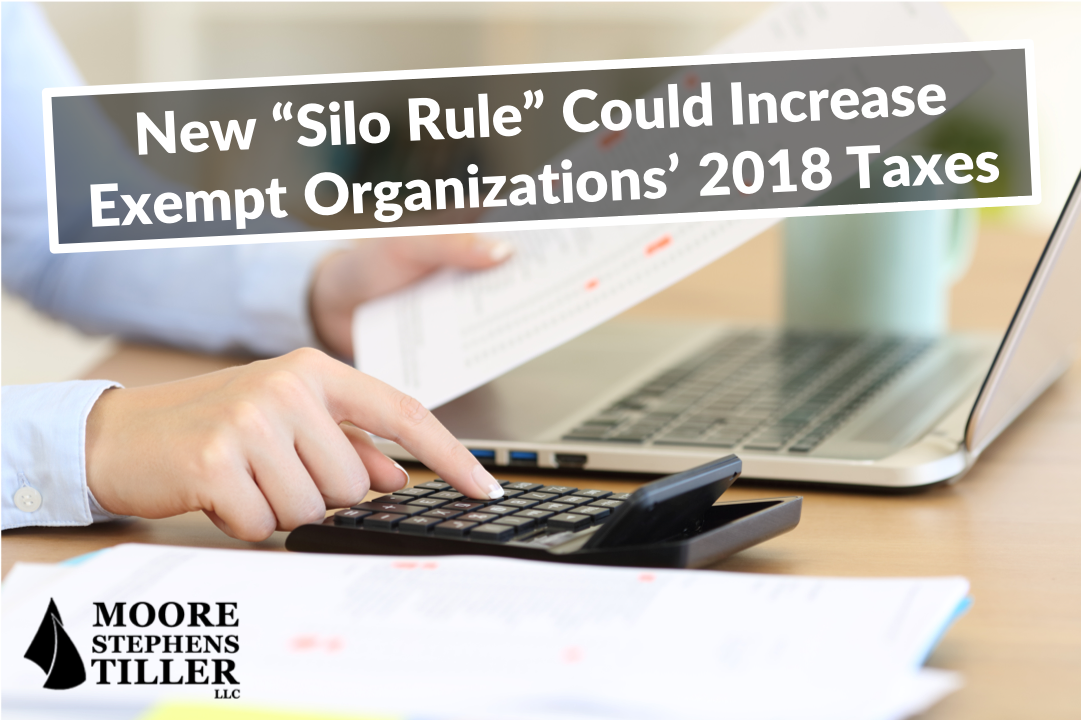
In our recent blog post, we discussed some of the impact that the Tax Cuts and Jobs Act (TCJA) may have on your exempt organization’s 2018 income taxes. We highlighted new taxation of employee benefits like parking and transportation, and explained how you may be able to avoid it.
While the TCJA dropped the corporate tax rate to 21 percent, it included some significant changes to the way your tax-exempt organization will report Unrelated Business Income (UBI) on more than one unrelated trade or business. Specifically, it implemented the “silo rule,” which means you can no longer offset the net income of one unrelated business with the net losses of another.
So, every unrelated business now stands alone (except parking and transportation), and you’ll be required to pay income taxes on the profitable ones as individual entities.
Still Some Confusion
The IRS and the Treasury Department issued Notice 2018-67 in August of 2018; it was intended to clarify some issues stirred up by the TCJA. It did provide some additional guidance, but left other questions unanswered.
For example, what is an unrelated trade or business? Congress did not specify in the TCJA what criteria should be used to determine whether an exempt organization actually has more than one unrelated trade or business – or how to identify them. Treasury and the IRS are considering the use of North American Industry Classification System (NAICS) 6-digit codes as a, “…reasonable, good-faith interpretation.”
The two bodies also suggest that the “fragmentation principle” might apply here. This principle was previously used to separate tax-exempt activities from unrelated trades or businesses, but it may be relevant in interpreting the new regulations. It states that an activity that occurs within a larger collective of similar activities doesn’t lose its classification as a trade or business.
There are other related issues still up in the air. For example, how do you divide up expenses that are shared by many areas of the overall organization, like overhead? If you have several K-1s from passive investment activities, will you be required to pay taxes on each individually? Imagine how the latter would affect your 990-T filing.
Dealing with Investments and Partnerships
The Treasury Department and IRS are considering rules that would treat an exempt organization’s investing activities—at least some of them—as one aggregated trade or business, which would simplify reporting and administrative tasks.
If partnership interests are involved, their investment activities would only be relevant if the exempt organization itself isn’t a participant in the partnership trade or business.
Partnerships are a bit of a murky area where these new UBI rules are concerned. How do you determine what the exempt organization’s interest in a partnership is? Interim and transition rules have been put in place to deal with, for example, unrelated debt-financed income.
Awaiting Answers
We’re watching for further guidance from the IRS and the Treasury Department that will make all of this clearer. In the meantime, we can look at the structure of your unrelated trades or businesses to start determining where you might be affected by the silo rule. We’d also be happy to go over the new regulations regarding net operating losses. This is a very complex issue that you need to understand thoroughly as you look toward 2018 income tax preparation.
We strongly recommend that you contact us soon to start unpacking all of these new instructions on your organization. We stand ready to help you prepare for what promises to be a very different kind of tax preparation because of the TCJA.
